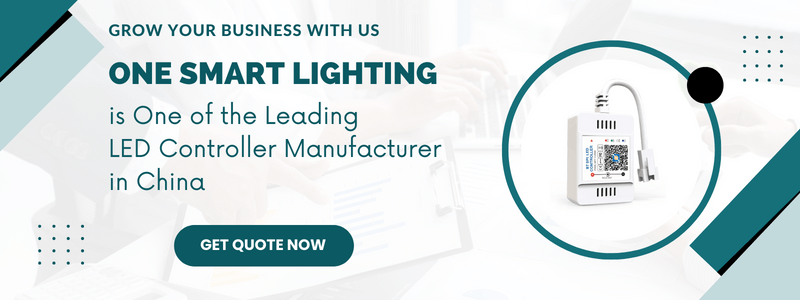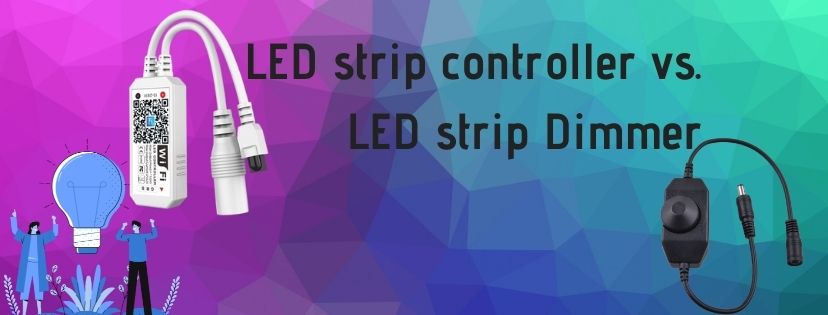In the world of LED lighting control, manufacturers have to continuously adapt and innovate to meet the ever-changing demands of consumers. One of the key considerations for manufacturers is the type of wireless connectivity to integrate into their LED light controllers. Today, we will compare two prominent wireless technologies in the market: WiFi and Bluetooth LED controllers. We will discuss their differences in terms of usage scenarios, production processes, and functionalities to help manufacturers make informed decisions.
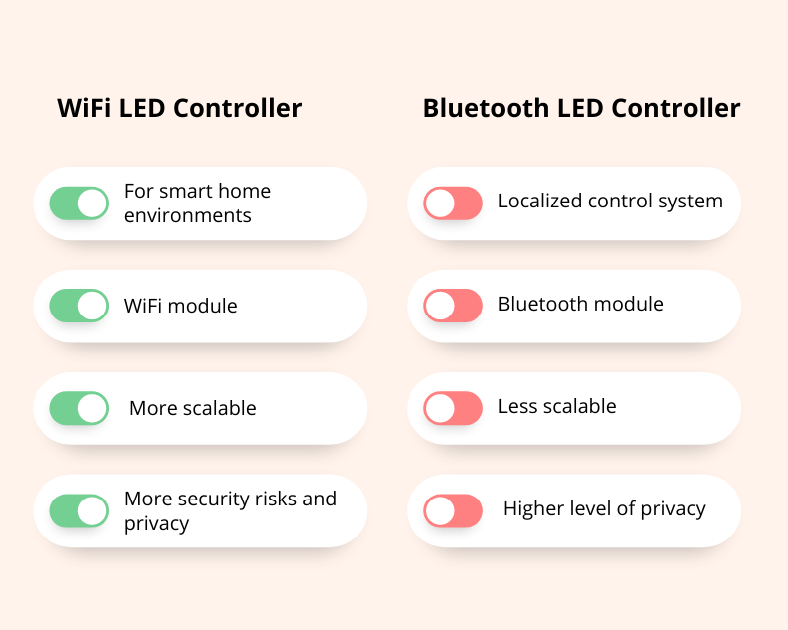
Table of Contents
ToggleUsage Scenarios
WiFi LED Controllers
WiFi LED controllers are primarily designed for smart home environments, where a stable internet connection is available. They are an ideal choice for users who want to control their LED lighting systems remotely, either from a different location within the house or even when they are away from home. This remote access is possible because smart WiFi LED controllers connect to the home network, allowing for communication with the user’s smartphone or other smart devices through the internet.
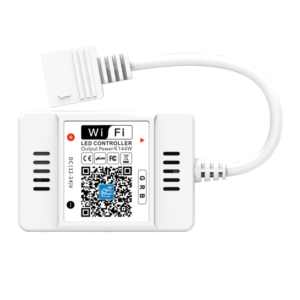
Bluetooth LED Controllers
On the other hand, Bluetooth LED controllers cater to users who require a more localized control system. These Bluetooth LED light strip controllers communicate directly with the user’s smartphone or other Bluetooth-enabled devices without the need for an internet connection. As a result, Bluetooth LED light strip controllers are well-suited for smaller-scale lighting setups, such as in a single room or a specific area within the home.
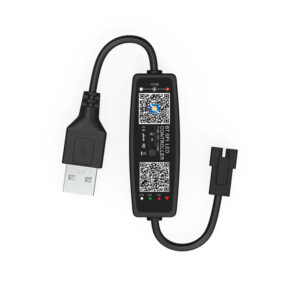
Production Processes
WiFi LED Controllers
Manufacturing WiFi LED controllers requires the integration of a WiFi module into the controller’s circuitry. This module enables communication between the controller and the home network. Due to the complexity of WiFi protocols, the production process may involve higher costs and a more advanced skill set compared to Bluetooth LED controllers. However, the integration of WiFi technology also allows for a more extensive range of features and capabilities.
Bluetooth LED Controllers
Bluetooth LED controllers require the integration of a Bluetooth module, which is typically less complex and more cost-effective compared to WiFi modules. As a result, the production process for Bluetooth RGB controllers may be less challenging and more affordable for manufacturers. However, it is essential to ensure that the Bluetooth module is compatible with various devices and has a sufficient range for seamless connectivity.
Functionalities
WiFi LED Controllers
Remote access: As mentioned earlier, WiFi LED controllers allow users to control their lighting systems from anywhere with an internet connection. This enables advanced scheduling, scene setting, and remote monitoring capabilities.
Integration with smart home systems: smart WiFi LED controllers can be easily integrated with popular smart home systems like Amazon Alexa, Google Home, and Apple HomeKit. This allows users to control their LED lighting using voice commands or through a centralized smart home app.
Firmware updates: smart WiFi LED controllers can receive firmware updates over the internet, ensuring that the controller always has the latest features and security updates.
Multi-user control: Since the LED strip WiFi controller connects to the home network, multiple users can control the lighting system simultaneously, allowing for a more versatile and collaborative control experience.
Bluetooth LED Controllers
Ease of setup: Bluetooth RGB LED controllers typically offer a simple and straightforward setup process. Users can quickly pair their smartphones or other Bluetooth-enabled devices with the controller without the need for a home network or additional equipment.
Low energy consumption: Bluetooth technology is known for its low energy consumption, making Bluetooth RGB LED controllers an energy-efficient choice.
Localized control: As Bluetooth RGB LED controllers communicate directly with the user’s device, they provide a more intimate and localized control experience, which may be preferred in certain scenarios.
Cost-effectiveness: Due to the less complex and more affordable production process, Bluetooth RGB LED controllers may be a more cost-effective option for manufacturers and consumers.
When choosing between WiFi and Bluetooth LED controllers, manufacturers should also take into account other factors that can impact the overall user experience and market demand. Here are some additional considerations:
Range and Connectivity
WiFi LED Controllers
WiFi RGB LED controllers can provide a more extensive range due to their reliance on the home network. As long as the controller is within the coverage area of the WiFi network, users can maintain a stable connection. However, WiFi signals can be affected by interference from other devices and structural elements within the home, which may impact the controller’s performance.
Bluetooth LED Controllers
Bluetooth RGB controllers have a more limited range compared to their WiFi counterparts. While modern Bluetooth technology can reach distances of up to 100 meters, the actual range may be significantly reduced due to obstacles and interference. Nonetheless, for smaller-scale lighting setups, this range is usually sufficient.
Security and Privacy
WiFi LED Controllers
Since WiFi LED controllers connect to the home network and the internet, they may be more susceptible to security risks and privacy concerns. Manufacturers should invest in robust security measures, such as encryption and authentication protocols, to protect the user’s data and ensure the controller’s integrity.
Bluetooth LED Controllers
Bluetooth RGB controllers, due to their localized and direct communication with the user’s device, may offer a higher level of privacy. However, Bluetooth technology is not immune to security risks. Manufacturers should implement security features such as secure pairing methods and data encryption to safeguard the user’s information and maintain the controller’s security.
Scalability and Multi-Device Control
WiFi LED Controllers
WiFi LED controllers are inherently more scalable, as they can connect to a home network with multiple devices. This enables users to control various LED lighting systems and even integrate them into a cohesive smart home ecosystem.
Bluetooth LED Controllers
Bluetooth RGB controllers, while providing localized control, may be less scalable due to their limited range and dependence on direct communication with the user’s device. However, advances in Bluetooth mesh technology may enable more extensive and flexible control systems in the future.
Market Demand and Trends
Manufacturers should also stay informed about current market trends and consumer preferences when deciding between WiFi and Bluetooth LED controllers. By analyzing customer feedback, conducting market research, and monitoring industry developments, manufacturers can better understand the needs of their target audience and make informed decisions that cater to those needs.
Conclusion
The choice between WiFi and Bluetooth LED controllers depends on various factors, including usage scenarios, production processes, functionalities, range and connectivity, security and privacy concerns, scalability, and market demand. By carefully considering these factors and staying informed about industry trends, manufacturers can make strategic decisions that will ultimately benefit their customers and strengthen their position in the competitive LED lighting control market.
Related Articles

